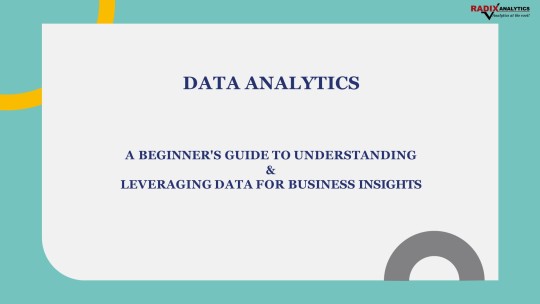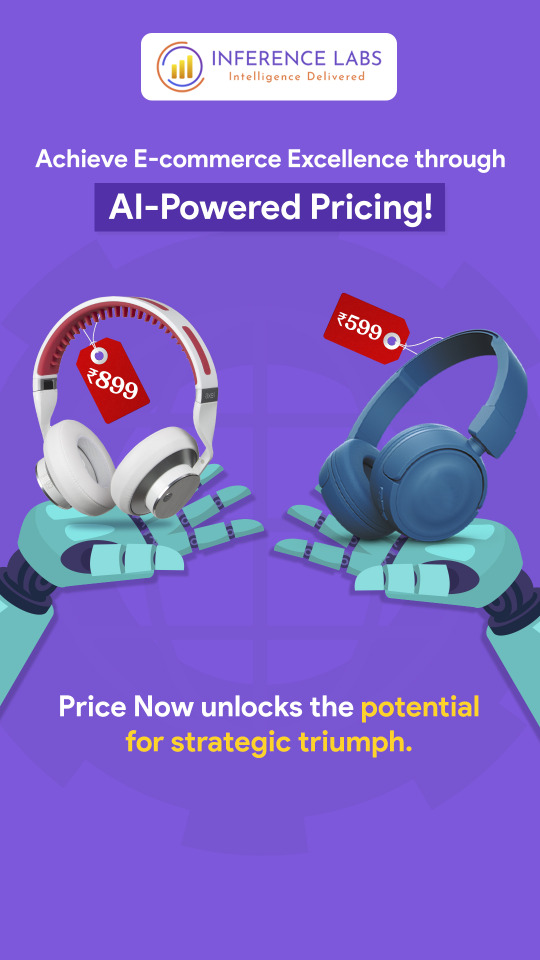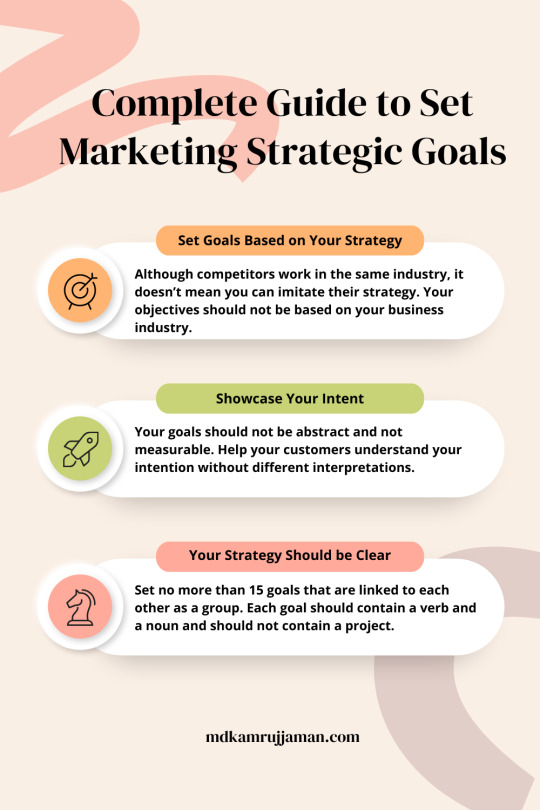#AdvancedAnalytics
Video
The new brand identity emphasizes minimalism and consistency to represent the company's identity and values. The wordmark in the logo conveys a sense of confidence through strong geometric forms while the letter A is deliberately replaced with a star, or in this case the polestar – that has age old significance as the guiding star – that aims to lead the way for Polestar Solutions. This reflects a sense of connection and guidance as the company enables its customers to embark on their digital transformation journeys.
The intent behind the rebranding is to differentiate Polestar Solutions within the industry through a connected understanding of its strategic advantage and its ability to address clients' needs by bringing out the most sophisticated insights from their data in a value-oriented manner.
Visit Our Website - www.polestarllp.com
3 notes
·
View notes
Text

Seamless Customer Support, Anytime, Anywhere: Remote Contact Center at Your Service
Experience seamless customer support with a remote contact center. Enjoy the advantages of round-the-clock availability, multi-channel interactions, and efficient call handling. Deliver exceptional service to your customers, regardless of location or time zone.
For more information : https://www.ringflow.com/remote-contact-center/
Contact Us :
👉 Email:- [email protected]
👉 WhatsApp:- 1 917-254-4289
#FutureOfCustomerService#RemoteContactCenter#VirtualCollaboration#FlexibleWorking#SeamlessInteractions#UnlockingPossibilities#DistributedTeams#EfficientCallRouting#AdvancedAnalytics#RevolutionizeCustomerExperience
1 note
·
View note
Text

https://www.knowledgewoods.com/business-productivity-tools/power-bi-certification-training.html
#DataAnalytics#PowerBI#Certification#TrainingCourse#Microsoft#DataVisualization#DAX#AdvancedAnalytics#CareerDevelopment#ProfessionalSkills
0 notes
Text
Top Power BI Dashboards
Discover the top-rated Power BI Dashboards for insightful analytics. Our expertly designed dashboards provide seamless integration, custom visualization, and real-time data tracking. Ideal for businesses seeking to transform data into actionable insights. Elevate your data analysis with our best-in-class Power BI solutions.
#BusinessIntelligence#BIDashboard#ReportingTools#AdvancedAnalytics#DataVisualization#PowerBI#Tableau#BIReporting#DataDrivenDecisions#BusinessAnalytics#BIServices#PowerBIServices#TableauServices
0 notes
Text
#Revolutionizing Supply Chain Efficiency through Network Optimization
Originally Published on: QuantzigSupply Chain Network Optimization Boosts Efficiency, Cuts Inventory by 65%
##Industry Overview In the dynamic realm of supply chain dynamics, a leading U.S. food manufacturing company faced intricate challenges due to the complexity of its supply network. To address this complexity and enhance overall performance, the company partnered with Quantzig, aiming to redesign its supply chain for increased efficiency in response to surging global demand and online sales.
Book a demo to explore meaningful insights derived from data through our analytical tools and platform capabilities. Schedule a demo today!
##The Business Challenge With supply chain operations impacting procurement costs and service efficiency, optimizing product flow became imperative. Unfortunately, many businesses neglect aligning their network optimization programs with long-term objectives. In response, Quantzig focuses on developing dynamic supply chain network optimization capabilities that align with both short-term efficiency gains and long-term strategic goals.
##Solutions Offered and Value Delivered Quantzig's analytics experts collaborated with the client, conducting a thorough evaluation, recommending operational enhancements, piloting changes, and finally implementing them. Leveraging internal supply chain data, the team uncovered several cost-saving opportunities.
Our supply chain network optimization solutions enabled the client to:
Enhance value creation: Implementing systematic order management systems. Achieve performance improvements: Streamlining internal clearance processes. Reduce inventory costs: Achieving a remarkable 65% reduction. Experience the advantages firsthand by testing a customized complimentary pilot designed to address your specific requirements. Pilot studies are non-committal in nature.
##Impacts of Supply Chain Network Optimization
###Enhanced Operational Efficiency Implementation of advanced analytics and optimization techniques streamlined warehouse expenses and supply chain networks, improving product availability and delivery speed. This led to optimized operational details, reduced excess capacity, mitigated shortages, and consolidated footprints, resulting in improved bottom-line numbers and heightened market competitiveness.
###Improved Agility and Responsiveness Incorporating optimization-derived designs and employing deep reinforcement learning allowed businesses to adapt to rapid demand growth and unforeseen disruptions. Continuous improvements and incremental changes enhanced the supply chain's resilience, ensuring uninterrupted service and meeting next-day delivery cutoffs, thus capitalizing on opportunities and maintaining customer satisfaction.
###Strategic Decision Making Multi-objective network optimization aligned organizational objectives with supply chain configurations, facilitating strategic growth initiatives and future expansion plans. Utilizing physics-inspired graph neural networks ensured unconstrained capacity networks supporting future growth strategies, fostering sustainable growth and a competitive advantage.
###Technological Advancement and Innovation Leveraging operations research-based tools and emerging technologies like combinatorial optimization with graph neural networks fueled innovation within the supply chain domain. This approach tackled complexities with novel strategies, fostering a culture of continuous improvement and keeping organizations at the forefront of supply chain management practices.
##Optimization Techniques and Technology
###Advanced Analytics for Data-Driven Insights Leverage advanced analytics to harness vast amounts of data within supply chain networks. Techniques such as network modeling and deep reinforcement learning analyze operational details, identify patterns, and inform decisions. Thought leadership in advanced analytics enables organizations to stay ahead, leveraging data as a strategic asset.
###Multi-Objective Network Optimization Embrace multi-objective network optimization approaches to balance conflicting goals within the supply chain. By optimizing across various dimensions like product availability, delivery speed, and cost efficiency, businesses achieve synergies and trade-offs aligning with strategic objectives.
###Integration of Cutting-Edge Technologies Integrate technologies like Combinatorial Optimization with Physics-Inspired Graph Neural Networks to tackle complex supply chain networks. By harnessing machine learning and graph neural networks, businesses address traditional supply chain problems, optimizing designs for maximum effectiveness and staying agile in evolving market dynamics.
###Continuous Improvement through Operations Research-Based Tools Embrace operations research-based tools for continuous improvement within the supply chain. This systematic approach identifies opportunities, evaluates scenarios, and makes data-driven decisions, enhancing supply chain resilience and improving overall operational efficiency.
###Strategic Alignment with Organizational Objectives Ensure optimization techniques and technology align with broader organizational objectives. Integrating optimization-driven supply chain network designs with the organizational structure fosters a cohesive framework for decision-making, resource allocation, and drives sustainable growth.
##How Can You Achieve Supply Chain Network Optimization?
Achieving supply chain network optimization requires a comprehensive approach integrating various strategies and technologies.
Utilize Advanced Analytics and Technologies: Leverage advanced analytics and technologies like deep reinforcement learning and operations research-based tools for thorough analysis.
Streamline Operational Processes: Focus on streamlining processes to improve delivery speed and product availability. Optimize inbound and outbound delivery options, utilize distributed storage networks, and explore different transport modes.
Align Organizational Objectives: Ensure alignment between organizational objectives and supply chain configurations. Develop a clear future growth strategy and organizational model supporting value-adding stages.
Continuous Improvement and Adaptation: Embrace a culture of continuous improvement to address evolving challenges. Implement incremental network changes based on feedback, market trends, and technological advancements.
Monitor Performance Metrics: Establish key performance metrics and regularly monitor bottom-line numbers. Analyze reports to track progress, identify areas for improvement, and make data-driven decisions.
Quantzig is a leading provider of advanced analytics and consulting services, known for its expertise in supply chain optimization. Our capabilities are characterized by a data-driven approach, advanced analytics, and a focus on delivering tangible business outcomes such as cost savings, improved service levels, and enhanced operational resilience.
Adopting a structured approach to supply chain network optimization can help businesses tackle complexities and achieve substantial reductions in inventory costs. Get started with your complimentary trial today and explore our range of customized, consumption-driven analytical solutions across different maturity levels.
Contact us.
#SupplyChainOptimization#NetworkEfficiency#DataDrivenInsights#OperationsResearch#AdvancedAnalytics#InnovationInSupplyChain#ContinuousImprovement
0 notes
Text
Tableau interview question
Tableau, a powerful data visualization tool, has gained immense popularity in the realm of business intelligence and analytics. As a result, the demand for Tableau professionals has soared, leading to a surge in Tableau-related interview questions. Whether you're a seasoned Tableau expert or just starting your journey with the tool, preparing for Tableau interviews is crucial to securing your dream job. In this article, we'll explore some common Tableau interview questions, along with key concepts and tips to help you ace your next interview.
1. Understanding Tableau Basics:
Before diving into specific interview questions, it's essential to have a solid understanding of Tableau basics. Familiarize yourself with Tableau's interface, data connections, visualization types, and basic calculations. Interviewers often start with fundamental questions to assess your proficiency in navigating the Tableau environment.
2. Data Preparation and Manipulation:
Tableau interviewers frequently inquire about your ability to prepare and manipulate data within the Tableau environment. Expect questions related to data blending, data cleansing techniques, joining and blending data sources, and handling null values. Demonstrating proficiency in these areas showcases your data manipulation skills, a critical aspect of Tableau proficiency.
3. Visualization Best Practices:
Interviewers are keen on evaluating your knowledge of visualization best practices. Be prepared to discuss concepts such as effective data visualization techniques, choosing the right chart types, utilizing color and formatting effectively, and designing dashboards for optimal user experience. Providing examples of your past visualization projects and explaining your design choices can significantly enhance your credibility during the interview.
4. Calculations and Advanced Analytics:
Tableau offers powerful calculation features for deriving insights from data. Expect interview questions on calculated fields, table calculations, level of detail (LOD) expressions, and advanced analytics functions like forecasting, trend analysis, and clustering. Demonstrating your proficiency in creating complex calculations and performing advanced analytics tasks will undoubtedly impress interviewers.
5. Tableau Server and Administration:
For roles involving Tableau Server administration or deployment, interviewers may delve into topics such as server architecture, user management, permissions, and performance optimization. Familiarize yourself with Tableau Server's architecture, deployment options, security features, and best practices for server administration to tackle questions in this domain effectively.
Tips for Acing Tableau Interviews:
Practice with Real-world Projects: Engage in hands-on projects to gain practical experience with Tableau. Real-world projects not only enhance your skills but also provide compelling examples to discuss during interviews.
Stay Updated with Tableau Features: Tableau releases frequent updates with new features and enhancements. Stay abreast of these updates and familiarize yourself with the latest Tableau functionalities to demonstrate your commitment to continuous learning.
Mock Interviews and Role-play: Conduct mock interviews with peers or mentors to simulate the interview experience. Role-playing different interview scenarios will help build confidence and refine your responses to common Tableau interview questions.
Emphasize Problem-solving Skills: Tableau interviewers often present real-world scenarios or data challenges to assess your problem-solving skills. Practice solving data-related problems and articulating your thought process effectively during interviews.
Communicate Effectively: Effective communication is paramount during Tableau interviews. Clearly articulate your ideas, methodologies, and findings, and be prepared to defend your approach to data visualization and analysis.
In conclusion, preparing for Tableau interviews requires a combination of theoretical knowledge, practical skills, and effective communication. By mastering Tableau basics, data manipulation techniques, visualization best practices, advanced analytics, and Tableau Server administration concepts, you can confidently navigate through Tableau interviews and secure your desired role in the ever-expanding field of data analytics and business intelligence.
if you like to learn more visit analyticsjobs.in
0 notes
Text
The Power Of Predictive Analytics In Inventory Optimization
Elevate your business with the power of predictive analytics in inventory management. Unlock efficiency and boost profitability through data-driven optimization
#inventoryoptimization#predictiveanalytics#supplychainmanagement#datadrivendecisions#businessintelligence#inventorymanagement#advancedanalytics#optimizeinventory#dataanalysis
0 notes
Text

Free Virtual Event-Reserve a spot (end in 19 hours)
Data Analytics - Unlocking Career as an Analyst
#dataanalyticscareer#datatools#advancedanalytics#reportingskills#problemsolving#dataskills#careersuccess
0 notes
Text
The Impact of Advanced Analytics on Attendance Management in 2024
Unlocking Precision in 2024: Explore how advanced analytics redefine attendance management, driving real-time insights, personalized policies, and enhanced decision-making. Stay ahead with the future of workforce optimization.
#HRtech#PeopleAnalytics#FutureOfWork#TechInnovation#WorkforceProductivity#HRInsights#DataDrivenDecisions#BusinessInnovation#WorkplaceEfficiency#EmployeeEngagement#WorkforceOptimization#AttendanceManagement#AdvancedAnalytics#RealTimeInsights#PredictiveAnalytics#HRTransformation#DigitalWorkplace#InnovationHub#LeadershipDecisions#HRStrategies#StrategicHR#EmployeeSatisfaction#DataAnalytics#HRTrends#WorkforceAnalytics#SmartWorkforce#HRLeadership#TechIntegration#HRSoftware#AutomationInHR
0 notes
Text
DATA ANALYTICS
A BEGINNER’S GUIDE TO UNDERSTANDING
&
LEVERAGING DATA FOR BUSINESS INSIGHTS
INTRODUCTION

What is Data Analytics?
Data Analytics is the process of examining data to extract insights and draw conclusions. It involves using statistical and computational methods to analyze data sets, and can be used to identify patterns, trends, and relationships. Data Analytics is used in a wide variety of industries, including finance, healthcare, and retail.
TYPES OF DATA ANALYTICS
There are three main types of Data Analytics: Descriptive, Predictive, and Prescriptive. Descriptive Analytics focuses on summarizing past data to gain insights into what has happened. Predictive Analytics uses statistical models to make predictions about future events.
Prescriptive Analytics uses data and algorithms to recommend actions to optimize outcomes.
DATA COLLECTION
To perform Data Analytics, you need data. There are many ways to collect data, including surveys, web analytics, and social media monitoring. It’s important to collect high-quality data that is relevant to your business goals.
Data should be organized and stored in a way that makes it easy to analyze.
CHALLENGES OF DATA ANALYTICS
While Data Analytics can be incredibly useful, it also presents several challenges. These include data quality issues, privacy concerns, and data overload. It’s important to address these challenges to ensure that your data analysis is accurate and effective.
CONCLUSION
Data Analytics is a powerful tool for businesses looking to gain insights into their operations and customers. By understanding the basics of data analytics and addressing its challenges, businesses can leverage data to drive growth and success.
#bussiness#data analytics#data analysis#datascience#predictiveanalytics#Analytics#BigData#DataScience#DataDriven#BusinessIntelligence#DataInsights#PredictiveAnalytics#MachineLearning#AIinAnalytics#DataVisualization#DataMining#StatisticalAnalysis#DecisionAnalytics#AdvancedAnalytics
1 note
·
View note
Text
A Guide to Microsoft Power BI Certification Training Course for Mastering Data Analytics
The capacity to efficiently analyze and interpret data is a highly sought-after skill in today's data-driven society. Data is essential for decision-making, trend identification, and operational insights for organizations in all sectors. Professionals with expertise in data analytics tools are therefore in great demand. Microsoft Power BI is one such technology that has become extremely popular in recent years.
A strong business analytics tool, Microsoft Power BI Course enables users to display and analyze data more quickly, effectively, and comprehensively. Anybody who works with data, whether they are a business analyst, data scientist, or someone else, can greatly benefit from learning Power BI. And getting certified by Microsoft Power BI is the best method to show off your Power BI prowess.
Why Get Certified in Microsoft Power BI?
A Microsoft Power BI Certification proves your dedication to remaining current with emerging tools and technology in the data analytics space in addition to validating your abilities and experience. The following are strong arguments in favour of getting a Power BI certification:
Industry Recognition: In the industry, Microsoft Power BI certifications are highly valued and acknowledged. Being certified in Power BI might help you stand out from the competition and attract the attention of companies.
Employment Advancement: A Power BI certification can lead to new employment prospects and possibly higher-paying roles, as there is an increased demand for data specialists.

Enhanced Skills: You can gain a deeper understanding of Power BI and its numerous features and functions by putting yourself through the rigorous training and examination that come with the certification process.
Credibility: Having a Power BI certification increases your credibility as a data specialist and gives clients and employers more faith that you can manage challenging data analytics projects.
Overview of the Power BI Certification Training Course
The first step towards becoming a certified Power BI specialist is usually to enrol in an extensive training program. The key ideas and abilities needed to ace the certification test and perform well in practical situations are covered in an organized Power BI certification training course. What to anticipate from a standard Power BI certification training course is as follows:
Overview of Power BI: The first part of the course provides an overview of Power BI, including its features and uses across a range of sectors. You will gain knowledge of the Microsoft Power BI Certification ecosystem and best practices for data visualization.
Data Preparation: Data cleansing, transformation, and modelling are just a few of the methods covered in great detail throughout the course. Gain practical experience in establishing connections with different data sources and preparing data for analysis.
Data Visualization: You will explore various chart types, graphs, and interactive graphics accessible in Power BI as you delve into the art and science of data visualization. You will learn how to design interesting and perceptive reports and dashboards in this course.
DAX (Data Analysis Expressions): The formula language used in Power BI Certification to create calculated columns, measures, and calculated tables is called DAX, or Data Analysis Expressions. A comprehensive understanding of DAX functions and their real-world applications will be provided by the training course.
Power Query: One of Power BI's most potent tools for data transformation is Power Query. Advanced Power Query techniques for data transformation, mashup, and manipulation will be covered in the course.
Advanced Analytics: To extract more information from your data, you'll discover how to use Power BI Certification advanced analytics tools, which include trend analysis, clustering, and forecasting.
Power BI Service: Using Power BI Service to deploy and share Power BI dashboards and reports will also be covered in this session. You'll know how to plan data refreshes, coordinate with coworkers, and oversee content packs.
Getting Ready for the Certification Exam: There will be several chances for you to put your knowledge and abilities to the test during the course via assignments, quizzes, and practice tests. The training provider will give you the tools and direction you need to confidently ace the certification exam.
In summary
To sum up, anyone hoping to progress in the data analytics industry would be wise to enrol in a Microsoft Power BI Certification training course. Getting certified in Power BI can provide you with a competitive advantage and open doors to interesting career options, especially with the exponential expansion of data and the growing need for qualified experts.
A Power BI certification training course offers the information, abilities, and validation you need to succeed, regardless of your level of expertise. It is ideal for beginners trying to get started in data analytics or for seasoned professionals looking to advance and stay ahead of the curve. Why then wait? To start your journey toward becoming a certified Power BI specialist, enrol in a Power BI certification training course right away.
#DataAnalytics#PowerBI#Certification#TrainingCourse#Microsoft#DataVisualization#DAX#AdvancedAnalytics#CareerDevelopment#ProfessionalSkills
0 notes
Text
Salesforce CRM Customization for Pharma: Tailoring Analytics to Industry Needs
In the dynamic and highly regulated world of the pharmaceutical industry, efficient customer relationship management (CRM) is paramount. Salesforce, a leading CRM platform, has emerged as a versatile tool that offers pharmaceutical companies the flexibility to customize analytics and insights according to their specific industry requirements. This blog post explores how Salesforce CRM customization transforms the pharmaceutical sector by tailoring analytics to address industry-specific challenges and opportunities.
Write to us at [email protected] to explore how Salesforce CRM customization transforms the pharmaceutical sector by tailoring analytics to address industry-specific challenges and opportunities.
Understanding Salesforce CRM Customization
Salesforce is renowned for its ability to adapt and cater to the unique needs of various market. Customization involves tailoring the platform's features and functionalities to align with an organization's processes, goals, and specific industry regulations. In the pharmaceutical sector, where data accuracy, compliance, and personalized engagement are paramount, customization offers a tailored solution to streamline operations and drive growth.
Key Benefits of Salesforce CRM Customization in Pharma:
Enhanced Data Management: The pharmaceutical industry relies on a multitude of data, ranging from physician interactions to patient information and regulatory compliance data. Customizing Salesforce enables companies to structure data fields, forms, and reports to match their unique data needs. This ensures accurate tracking of interactions and adherence to data privacy regulations like HIPAA.
Compliance Management: The stringent regulations governing the pharmaceutical industry necessitate meticulous compliance management. Customization allows pharmaceutical companies to integrate compliance checks directly into the CRM system, ensuring that interactions with healthcare professionals and patients are in accordance with industry regulations.
Personalized Customer Engagement: Salesforce's customization capabilities enable the creation of tailored communication and engagement strategies. Companies can segment customers based on factors like prescription history, therapy areas, and prescribing patterns, allowing for more personalized interactions and targeted marketing efforts.
Advanced Analytics: Pharmaceuticals thrive on data-driven decisions. Customized analytics dashboards in Salesforce allow companies to track sales trends, monitor product performance, and evaluate the effectiveness of marketing campaigns. Customized reports and visualizations help uncover insights that inform strategic decisions.
Key Opinion Leader (KOL) Management: For pharmaceutical companies, nurturing relationships with key opinion leaders (KOLs) is pivotal. Customized Salesforce functionalities can assist in identifying, engaging, and tracking interactions with KOLs. This streamlines collaboration and maximizes the impact of influential voices.
Regulatory Reporting: Regulatory reporting is a critical aspect of the pharmaceutical sector. Customization in Salesforce can automate the generation of compliance reports and ensure that required information is readily available for audits and regulatory submissions.
Implementing Salesforce CRM Customization for Pharma:
Identify Specific Needs: Prioritize the customization features that align with your pharmaceutical company's goals, whether it's data management, personalized engagement, or compliance enhancement.
Collaborative Customization: Involve cross-functional teams comprising IT, sales, marketing, compliance, and legal departments. Collaboration ensures that customization meets the diverse needs of different stakeholders.
Select Appropriate Tools: Salesforce offers a range of tools and features for customization, including custom objects, fields, workflow automation, and analytical dashboards. Choose the ones that align with your goals.
Data Migration and Integration: If migrating from another CRM or integrating with existing systems, ensure a seamless transfer of data and integration with other tools used in your pharmaceutical operations.
Training and Adoption: Provide comprehensive training to your team on using the customized Salesforce CRM effectively. Adoption is essential for reaping the benefits of customization.
Conclusion
Salesforce CRM customization holds immense potential for revolutionizing how pharmaceutical companies manage customer relationships, data, and compliance. By tailoring analytics and functionalities to the industry's unique challenges and requirements, customization empowers companies to make informed decisions, enhance engagement, and navigate the intricate regulatory landscape. As the pharmaceutical industry continues to evolve, embracing Salesforce CRM customization is a strategic step toward optimizing operations and achieving growth in an increasingly competitive environment.
Visit our website now: https://www.anervea.com/
#SalesforceInPharma#CRMCustomization#PharmaTech#DataDrivenDecisions#HIPAACompliance#PharmaCRM#RegulatoryCompliance#KOLManagement#PersonalizedEngagement#PharmaDataManagement#SalesforceForHealth#AdvancedAnalytics#PharmaCompliance#IndustrySpecificCRM#TailoredPharmaTools#StrategicCRM#NavigatingPharmaRegulations#EfficientPharmaOperations#SalesforceCustomization#OptimizedPharmaGrowth
0 notes
Text
Revolutionizing the Oil and Gas Industry Through Big Data Analytics
Originally Published on: QuantzigHow Big Data Analytics in Oil and Gas Industry Enabled to Modernize its Global Data Platform?
Innovative Solutions Shaping the Industry Landscape
The growing dependence on data and the imperative to advance exploration and production techniques in the Oil and Gas (O&G) sector underscore the pivotal role of advanced analytics. Analytics is integral to various areas such as exploration, drilling, production operations, seismic and microseismic data analysis, reservoir characterization and simulation, asset management, and occupational safety. Offshore O&G companies leverage data science and AI to access exploration and production data, unlocking new opportunities and optimizing existing infrastructure.
Oil & gas enterprises grapple with substantial data volumes from upstream, midstream, and downstream operations. Quantzig steps in with big data analytics solutions, seamlessly orchestrating production planning, execution, and the measurement of profitable outcomes.
Challenges Faced by a Leading O&G Firm: A major global player in the US O&G sector partnered with Quantzig to integrate analytics and digitalization into its operations for discovering new market opportunities. The client aimed to deploy a digital platform for comprehensive analysis and management of its O&G operations. Advanced analytics would enhance operations across the value chain, from exploration and production to processing, retail, and essential back-office tasks. The overarching goal was to chart roadmaps for digital transformation, building tech stacks and platforms supporting key business priorities in advanced analytics and digital technology.
Big Data Analytics Solutions for the Oil & Gas Industry: Quantzig spearheaded the transformation of oil and gas transport, processing, and distribution through an advanced big data analytics solution. This involved leveraging sophisticated algorithms for demand estimation, resource distribution, and pricing strategies. The client reaped the benefits of accessing real-time data at reduced costs, leading to a 6% to 8% overall performance improvement in the oil field and plant. The solution, grounded in advanced statistical techniques and machine learning, delivered the anticipated results.
AI-Driven Analysis Included:
Standardization and data integration
Pattern detection and predictive modeling
Rapid recognition of patterns and predictions to respond swiftly to disruptions
Seismic data management and analysis
Development of predictive analytics-driven simulations anticipating maintenance events
Impact Analysis of Quantzig’s Big Data Analytics: Quantzig's collaboration propelled improvements in the client's critical oil and gas assets and machinery operations. Productivity and profitability soared across global facilities. The solution evaluated reservoir potential, optimized downstream operations, reduced expenses, and increased margins. The big data analytics initiative modernized the data platform, yielding benefits like improved reservoir characterization and modeling, enhanced drilling safety, optimized pump performance, improved petrochemical asset management, and a 6% to 8% increase in oil and gas production.
Key Outcomes: The oil and gas industry has witnessed substantial benefits from data analytics, effectively steering data-intensive operations and adeptly analyzing purchase tendencies and various activities. Quantzig’s big data analytics solution optimizes upstream, midstream, and downstream operations, slashing drilling and exploration costs, enabling predictive maintenance, ensuring compliance with environmental regulations, enhancing resource performance, and adeptly analyzing seismic data.
Contact us.
0 notes
Text

For cutting-edge AI solutions, turn to Inference Labs, the best AI company in India. Our expertise is your key to staying competitive in today's AI-driven world
#InferenceLabs#DataAnalytics#BigData#MachineLearning#ArtificialIntelligence#DataInsights#AnalyticsSolutions#DataDriven#AdvancedAnalytics#BusinessIntelligence#PredictiveAnalytics#DataScience#AIandML#DataInnovation#AnalyticsExperts#DataVisualization#DataStrategy#DataMining#DataAnalyticsConsulting#AnalyticsTools#DataEngineering#AIAnalytics#DigitalTransformation#BusinessData#DataAnalyticsServices#DataAnalysis#DecisionSupport#DataManagement#InsightfulData#DataDrivenDecisions
0 notes
Text
Build Product Master
Easily upload your product Data and images.
Fill Excel template with your Product attribute values and upload.
Import 2D and 3D images and Automatically map to product IDs.
More information visit at freedomboard.ai

#FreedomboardFeatures#AIAnalytics#DataVisualization#BusinessIntelligence#DashboardSolutions#AIInsights#AdvancedAnalytics#DataDrivenDecisions#VisualizeData#AnalyticsPlatform
1 note
·
View note
Text

Complete Guide to Set Marketing Strategic Goals
#marketinganalytics#marketing#digitalmarketing#analytics#marketingstrategy#dataanalytics#businessanalytics#socialmediamarketing#webanalytics#digitalanalytics#googleanalytics#marketingtips#seo#bigdataanalytics#advancedanalytics#peopleanalytics#marketingdigital#predictiveanalytics#sportsanalytics#contentmarketing#socialmedia#videoanalytics#analyticsnews#instagramanalytics#socialanalytics#marketingautomation#analyticsservices#emailmarketing#data
1 note
·
View note